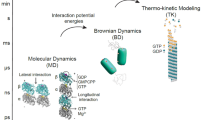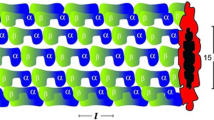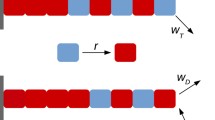Abstract
Microtubules (MTs) are protein filaments found in all eukaryotic cells which are crucial for many cellular processes including cell movement, cell differentiation, and cell division. Due to their role in cell division, they are often used as targets for chemotherapy drugs used in cancer treatment. Experimental studies of MT dynamics have played an important role in the development and administration of many novel cancer drugs; however, a complete description of MT dynamics is lacking. Here, we propose a new mathematical model for MT dynamics, that can be used to study the effects of chemotherapy drugs on MT dynamics. Our model consists of a growth-fragmentation equation describing the dynamics of a length distribution of MTs, coupled with two ODEs that describe the dynamics of free GTP- and GDP-tubulin concentrations (the individual dimers that comprise of MTs). Here, we prove the well-posedness of our system and perform a numerical exploration of the influence of certain model parameters on the systems dynamics. In particular, we focus on a qualitative description for how a certain class of destabilizing drugs, the vinca alkaloids, alter MT dynamics. Through variation of certain model parameters which we know are altered by these drugs, we make comparisons between simulation results and what is observed in in vitro studies.









Similar content being viewed by others
References
Bayley P, Schilstra M, Martin S (1989) A simple formulation of microtubule dynamics: quantitative implications of the dynamic instability of microtubule populations in vivo and in vitro. J Cell Sci 93:241–254
Calvez V, Lenuzza N, Doumic M, Deslys J-P, Mouthon F, Perthame B (2010) Prion dynamics with size dependency-strain phenomena. J Biol Dyn 4(1):28–42
Desai A, Mitchison T (1997) Microtubule polymerization dynamics. Ann Rev Cell Dev Biol 13:83–117
Dhamodharan R, Jordan M, Thrower D, Wilson L, Wadsworth P (1995) Vinblastine suppresses dynamics of individual microtubules in living interphase cells. Mol Biol Cell 6:1215–1229
Dimitrov A, Quesnoit M, Moutel S, Cantaloube I, Pous C, Perez F (2008) Detection of gtp-tubulin conformation in vivo reveals a role for gtp remnants in microtubule rescues. Science 322(5906):1353–1356
Dogterom M, Leibler S (1993) Physical aspects of the growth and regulation of microtubule structures. Phys Rev Lett 70:1347–1350
Escobedo M, Mischler S, Rodriguez Ricard M (2005) On self-similarity and stationary problem for fragmentation and coagulation models. Ann Inst H Poincaré Anal Non Linéaire 22(1):99–125
Flyvbjerg H, Holy T, Leibler S (1996) Microtubule dynamics: caps, catastrophes, and coupled hydrolysis. Phys Rev Lett E 54:5538–5560
Gardner MK, Zanic M, Howard J (2013) Microtubule catastrophe and rescue. Curr Opin Cell Biol 25(1):14–22
Greer M, Pujo-Menjouet L, Webb G (2006) A mathematical analysis of the dynamics of prion proliferation. J Theor Biol 242(3):598–606
Hill T, Chen Y (2002) Phase changes at the end of a microtubule with a gtp cap. PNAS 81(18):5772–5776
Hinow P, Rezania V, Tuszynski J (2009) Continuous model for microtubule dynamics with catastrophe, rescue, and nucleation processes. Phys Rev E 80:031904. https://doi.org/10.1103/PhysRevE.80.031904
Jordan M, Wilson L (2004) Microtubules as a target for anticancer drugs. Nat Rev 4:253–258
Kirschner M, Mitchison K (1984) Dynamic instability of microtubule growth. Nature 312:237–242
Laurençot P, Walker C (2007) Well-posedness for a model of prion proliferation dynamics. J Evol Equ 7(2):241–264
Lodish H, Berk A, Zipursky S, Matsudaira P, Baltimore D, Darnell J (2000) Molecular cell biology, 4th edn. W. H. Freeman and Company, New York
Maly I (2002) Diffusion approximation of the stochastic process of microtubule assembly. Bull Math Biol 64:213–238
Margolin G, Gregoretti I, Cickovski T, Li C, Shi W, Alber M, Goodson H (2012) The mechanisms of a microtubule catastrophe and rescue: implications from analysis of a dimer-scale computational model. Mol Biol Cell 23:642–656
Margolin G, Gregoretti I, Goodson H, Alber M (2006) Analysis of a mesoscopic stochastic model of microtubule dynamic instability. Phys Rev E 74:041920
Mohan R, Katruha E, Doodhi H, Smal I, Meijering E, Kapitein LC, Steinmetz M, Akhmanova A (2013) End-binding proteins sensitize microtubules to the action of microtubule-targeting agents. PNAS 110(20):8900–8905
Mukhtar E, Mustafa Adhami V, Mukhtar H (2014) Targeting microtubules by natural agents for cancer therapy. Mol Cancer Ther 93:275–284
Perthame B (2007) Transport equations in biology. Frontiers in mathematics. Birkhäuser Verlag, Basel
Perthame B (2015) Parabolic equations in biology. Lecture notes on mathematical modelling in the life sciences. Springer, Cham (Growth, reaction, movement and diffusion)
Sept D, Limbach H, Bolterauer H, Tuszynski J (1999) A chemical kinetics model for microtubule oscillations. J Theor Biol 197:77–88
Simonett G, Walker C (2006) On the solvability of a mathematical model for prion proliferation. J Math Anal Appl 324(1):580–603
Wade R (2009) On and around microtubules: an overview. Mol Biotechnol 43:177–191
Walker C (2007) Prion proliferation with unbounded polymerization rates. In: Proceedings of the sixth Mississippi State–UBA conference on differential equations and computational simulations, vol 15 of Electronic Journal of Differential Equations. Southwest Texas State University, San Marcos, TX, pp 387–397
Walker R, O’Brien E, Pryer N, Soboeiro M, Voter W, Erickson H, Salmon E (1988) Dynamic instability of individual microtubules analyzed by video light microscopy: rate constants and transition frequencies. J Cell Biol 107:1437–1448
White D, de Vries G, Dawes A (2014) Microtubule patterning in the presence of stationary motor distributions. Bull Math Biol 76(8):1917–1940
White D, de Vries G, Martin J, Dawes A (2015) Microtubule patterning in the presence of moving motor proteins. J Theor Biol 382:81–89
White D, Hubert F, Honoré S (2017) Exploring the effect of end-binding proteins and microtubule targeting chemotherapy drugs on microtubule dynamic instability. J Theor Biol 429:18–34
Zauderer E (2006) Partial differential equations of applied mathematics, 3rd edn. Wiley, New Jersey
Zhou J, Giannakakou P (2005) Targeting microtubules for cancer chemotherapy. Curr Med Chem 5:65–71
Acknowledgements
The program is funded thanks to the support of the A*MIDEX Project (No. ANR-11-IDEX-0001-02) funded by the “Investissements d’Avenir” French Government program, managed by the French National Research Agency (ANR), and the support INSERM Plan cancer No. PC201418. D.W. was supported by the programs cited above through a post-doc funding, F.H. and M.T. were partially supported by the programs cited above. We thank Saulo de Matos Silva for his careful reading and comments, in particular for a significant improvement of proofs in Section 4.6. We thank the anonymous referees for their helpful suggestions.
Author information
Authors and Affiliations
Corresponding author
Appendix: Advantages of Our Modeling Approach Over Existing Ones
Appendix: Advantages of Our Modeling Approach Over Existing Ones
Here, we illustrate a comparison between the model described here and the model of White et al. (2017). Both models describe MT dynamics in terms of simple advective growth, and incorporate a fragmentation-type term for MT shortening. The model (White et al. 2017) further incorporates an advection term to describe the growth and shortening of the MT cap region, as well as a system of ODEs to describe the binding/unbinding of end-binding proteins (EBs) to the cap.
Left: Full model results from simulation of model in White et al. (2017). Parameters are: \(\alpha = 2\), \(\gamma ^\mathrm{h} = 5\), \(\beta _{\infty }=20\), \(x_0 = 4\), \(\mu = 5.9 \times 10^3\), \(m = 2\), \(x_{\mathrm{min}}\) = 0.5, \(\kappa = 2\), \(p_\mathrm{c} = 2\), \(p_\mathrm{N} = 12\), \(p_0 = 15\), \(\lambda = 0.136\). Right: Simplified model of this paper. Parameters are (units given in Table 1): \(\alpha = 2\), \(\gamma ^\mathrm{h} = 5\), \(\beta _{\infty }=20\), \(x_0 = 2\), \(\mu = 0.1\), \(m = 2\), \(x_{\mathrm{min}}\) = 0.8, \(\kappa = 2\), \(p_\mathrm{c} = 2\), \(p_\mathrm{N} = 12\), \(p_0 = 15\)
Figure 10 describes the long-term dynamics of the “full” model of White et al. (2017) (left) and the “mini” model described in this paper (right). From this figure, it is clear that the long-term (averaged) tubulin concentrations are very similar. In particular, we make a comparison of the mean tubulin concentrations after t = 3 minutes (when the concentrations (roughly) oscillate about a mean). The steady-state values (calculated numerically) are recorded in Table 2. Here, all model parameters used in the simulation of the “mini” model are the same as those for the “full” model in White et al. (2017), where the full model also has a few extra parameters—all parameter values are recorded in the figure caption.
In the full model of White et al. (2017), we incorporate a compartment for shrinking MTs. In particular, MTs that undergo fragmentation (a catastrophe) do so in a separate shrinking compartment. From there, MTs that undergo fragmentation are completely depolymerized into free GDP-tubulin. For our mini model, both growth and fragmentation are described by a single equation. That is, there is no separate equation to describe MT shortening. Thus, the slight differences in concentrations could be due to the fact that, in the full model, as a MT shortens, polymerized GDP-tubulin remains in the shortening compartment for some period of time before entering the free GDP-tubulin compartment. Also, in the full model, the shortening compartment has a term for rescue, where some of the MTs that are shrinking enter back into the growing compartment.
Rights and permissions
About this article
Cite this article
Honoré, S., Hubert, F., Tournus, M. et al. A Growth-Fragmentation Approach for Modeling Microtubule Dynamic Instability. Bull Math Biol 81, 722–758 (2019). https://doi.org/10.1007/s11538-018-0531-2
Received:
Accepted:
Published:
Issue Date:
DOI: https://doi.org/10.1007/s11538-018-0531-2





